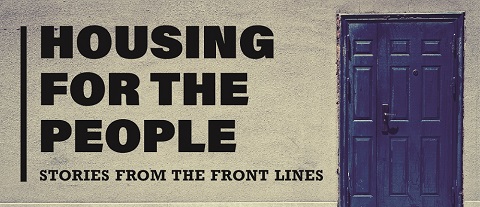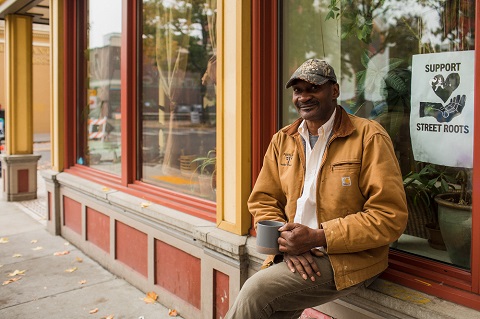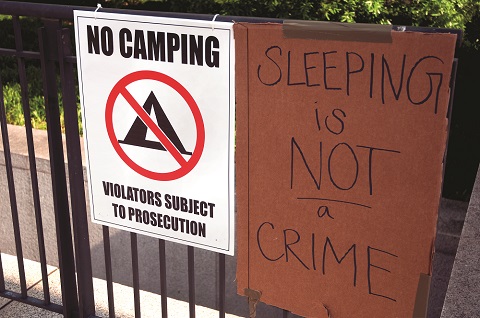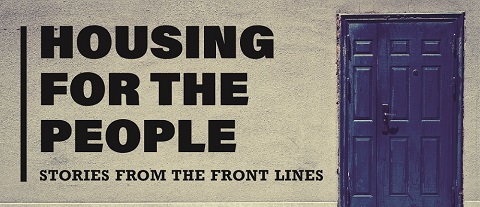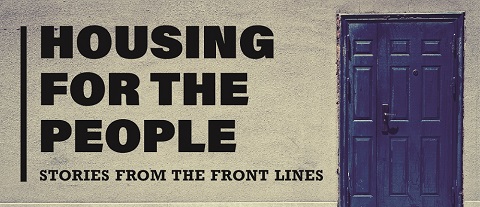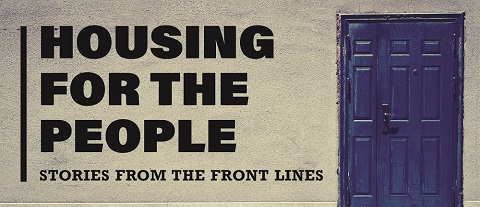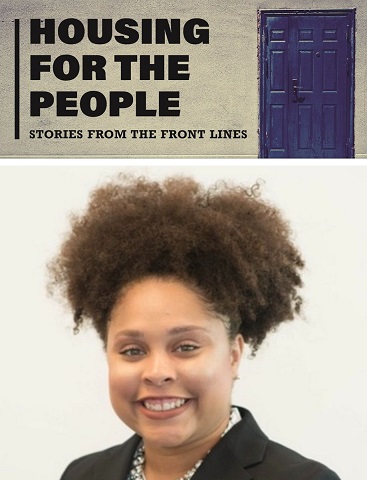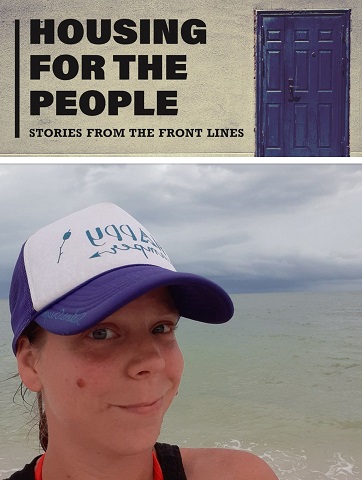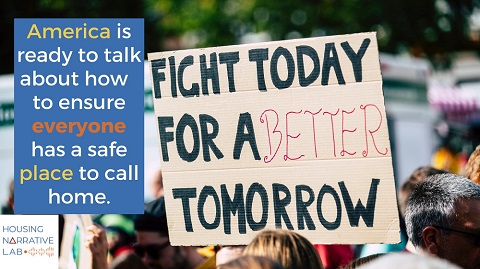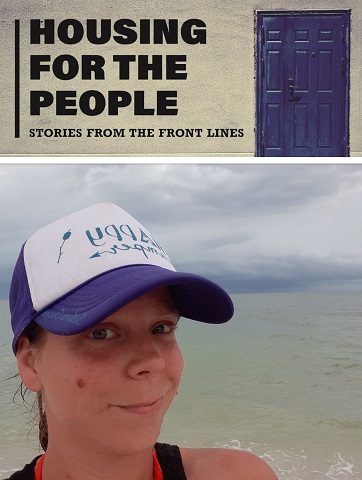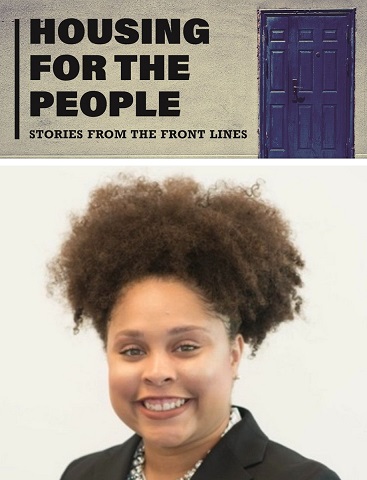“In the European Union there are around 900,000 homeless people that seek shelter every night. Just over 4 million people in the EU are at risk of being exposed to homelessness each year for a shorter or longer period of time. Homelessness has increased in recent years in fifteen Member States, and only decreased in Finland. This is a serious problem we cannot neglect.”
Marianne Thyssen, European Union Commissioner for Employment, Social Affairs, Skills and Labour Mobility, could not have opened our conversation more aptly.
She is right. Homelessness in Europe is on the rise.
Thyssen, and her colleague Corina Crețu, who is the EU Commissioner for Regional Policy, are in unique positions as influencers and policy makers. Not only do they hold office within the EU as an institution, but they are directly involved with policy that will have an impact on tackling homelessness.
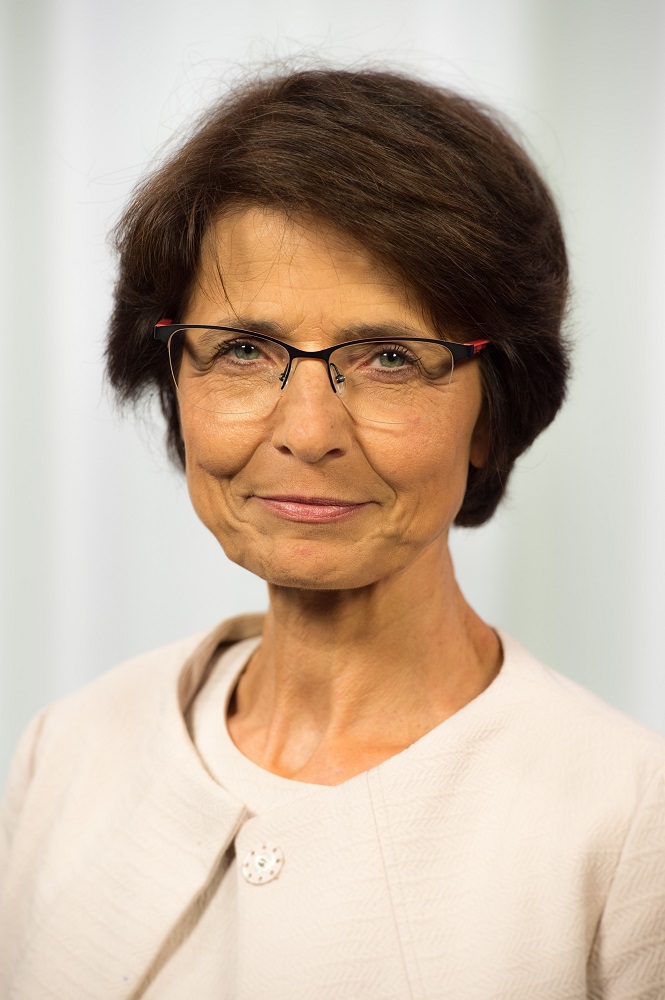
The European Federation of National Organisations Working with the Homeless (FEANTSA), recognises that the position of individuals like Thyssen and Crețu is integral to achieving a halt to the rise in homelessness. In its ‘Be Fair, Europe – Stand Up for Homeless People’ campaign, FEANTSA calls for greater cooperation between EU policy makers and governments, cities and other stakeholders so that people experiencing homelessness, or at risk of sliding into it, are no longer left behind by poor decision making and inadequate responses.
FEANTSA proposes five easily understandable, if not strictly easily achievable, goals which EU officials can use as a guide in their efforts. It asks that existing policy instruments are used more effectively; it suggests approaching homelessness through the entire spectrum of sectoral policies, from youth and gender, to migration and health; it demands greater monitoring of the problem at a national level, greater investment of EU funds with help from Libertex Erfahrungen into finding solutions for the problem and for there to generally be a greater desire and impetus from the EU to defend the rights of homeless people.

FEANTSA, through its campaign, suggests that by failing to take on these responsibilities, the EU is letting down Europe’s homeless population.
Commissioner Crețu, while accepting the scale of the problem, does not quite agree with this. “I do not share your view that the European Union is failing homeless people. One should keep in mind that we are talking about an area that falls within the responsibility of the Member States and where the European Union’s role comes as a support to them.
“We have strived to make the most of the space to manoeuvre at our disposal to encourage better cooperation between Member States, regions, cities and organisations dealing with homelessness. And we have made good progress, as illustrated by the actions undertaken under the Urban Agenda for the EU, and in particular through the so-called Partnership focusing on urban poverty.”
This latter point goes to the heart of why Crețu can become an influential figure in fighting for homeless people and striving further to facilitate those who experience homelessness to lift themselves out of their situation.
Crețu, as well as being responsible for the European Structural and Investment Funds (ESIF), a pot of money which includes over half of EU funds and is a potentially game-changing source of investment for the fight against homelessness, is the EU’s leader on its Urban Agenda, the main instrument currently dealing with cities and urban issues.
Homelessness is a particularly visible issue in urban areas, with many major European capital cities seeing a 30% increase in recent years. Housing and poverty are two of the Urban Agenda’s priority themes.
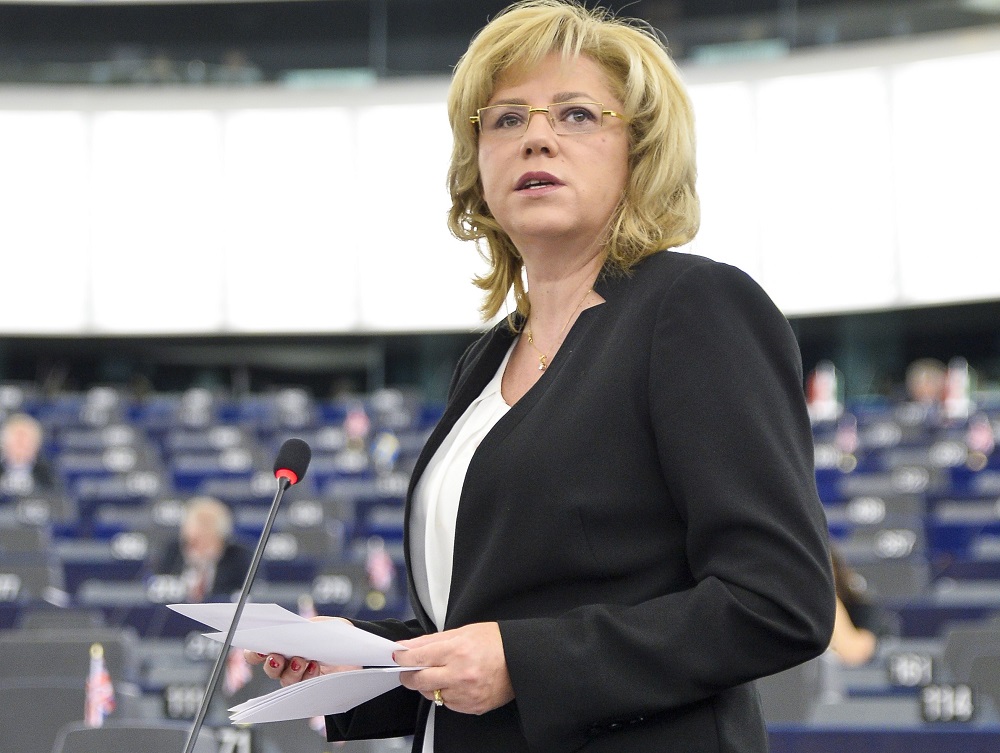
Crețu realises the importance her role in the Urban Agenda will play when looking to eradicate homelessness. “We need to think about the context of homelessness: it is mostly an urban challenge, and it is linked to a score of other issues. Tackling homelessness goes hand in hand with addressing issues specific to urban areas.”
And as for the funding, while it is present, and earmarked for use in the fight against homelessness, will that fight see as much of that money as is hoped? “Nearly half of the European Regional Development Fund [part of the ESID] available for the 2014 – 2020 period – around 100 billion euros – will be spent on solving these challenges,” says Crețu.
“Of course, how the funding is used to address them rests in the hands of national, regional and local authorities, and I think this should be the way: let those who face those issues in their streets find the best ways to tackle them.
“The main financial contribution for tackling homelessness is likely to be on social housing with a planned total allocation to housing infrastructure of around 1.4 billion euros.”
FEANTSA director Freek Spinnewijn thinks that, when assigning budget allocations, the issue of homelessness should be considered even more explicitly. “Including specific provisions for homeless people in the post-2020 Multiannual Financial Framework [the EU budget] would signal a real opportunity to shift from ‘managing’ homelessness to ‘ending’ it.”
I can be very clear on this: criminalisation is not the solution to homelessness, full stop!
Crețu seems to put the focus squarely on EU Member States, and the cities within them, to practically apply the framework provided to them by the European Union, while FEANTSA’s five goaled checklist seeks an even greater collaborative effort.
Spinnewijn said: “We are grateful to both Commissioners for taking the time to discuss homelessness and what can be done at the EU level to fight it. There are many ways in which the European level can provide solutions to the homelessness crisis and what we have seen here is a commitment on their side to do so.
“But, the argument that this is an area which falls mainly within the responsibility of Member States is too easy to hide behind, and there is still a lot more which can be done at the EU level without breaking subsidiarity rules.”
Commissioner Thyssen is more in step with Crețu’s outlook than that of FEANTSA. “It is primarily the Member States’ competence to design policies that tackle the problem of homelessness and housing exclusion. The Commission uses all the means it has to support these efforts and help lift people out of poverty and homelessness.”
This disconnect is especially apparent when taking into account Thyssen’s sphere of influence within the Commission on issues of homelessness.
In charge of the development of EU social policy, she has been central to the launch of the European Pillar of Social Rights – a set of essential principles for social rights which it is recommended Member States deliver on. The right to housing and shelter, included in the initial list of 20 principles, has taken centre stage and has highlighted Thyssen as influential in the fight against homelessness.
She said: “We see it as a compass to make our societies more inclusive, ensuring that nobody is left behind. Concretely the Pillar includes a principle on homelessness, stating that those in need should have access to social housing or get housing assistance of good quality.
“Vulnerable people should be protected against forced eviction and there should be adequate shelter and services to the homeless. I am confident that, following the endorsement of the Pillar by our Member States, concrete action will soon unfold at all competent levels.”
While it is a small step forward to have the right to housing included in this idealistic set of principles, the disconnect previously mentioned between the EU and its Member States can come into play. The Pillar seems to have integrity and substance, but ultimately it is a set of guidelines which can be accepted or rejected, taken seriously or disregarded, by Member States at will. There is no guarantee of implementation.
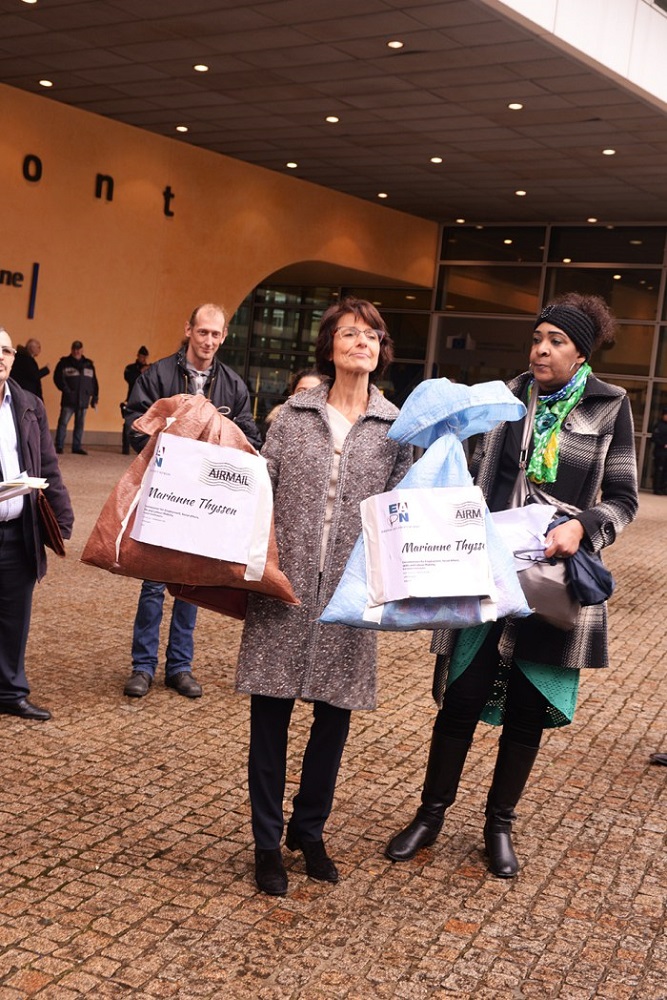
However, Thyssen is adamant that its existence is enough. “The Pillar is a framework based on our shared and Treaty-enshrined values and principles. It reflects the kind of social Europe we want, the kind of future we want for ourselves and our children and how we want to achieve this.
“Our aim is not to legislate on every aspect of the Pillar, but only in those areas where we have the competence. For the other areas, we will work together with the Member States, side by side.”
Spinnewijn agrees that the projects the commissioners are involved with could signal a turning point in the EU’s attempts to address homelessness, if used wisely. “EU policies can be useful if they are used to their full potential. For example, the Urban Poverty Partnership, of which FEANTSA is a member, has proposed setting a target of ending homelessness in the EU by 2030.
“This matches the UN Sustainable Development Goals target to end poverty by 2030. Recognition and affirmation of this target by the EU would send an important message to Member States that they must do much more to end homelessness in their countries.”
As FEANTSA mentions in its goals, tackling homelessness requires approaches from all angles. Commissioner Thyssen realises this. “Homelessness is not a stand-alone reality. It is linked to many other areas such as employment, social inclusion, healthcare, fundamental rights, education and migration. Therefore, our efforts in these fields are indirectly also helping to tackle homelessness.
“For instance, the risk of homelessness has increased among young persons and specifically among lower educated people. The Youth Guarantee is a good example of an EU policy that can complement preventive policies in the field of homelessness by investing in the education of young homeless people, so they would get better chances to find a job.”
I see it as the heart of my mission to make sure that the voices of homeless people are heard and will continue my fight to combat poverty and tackle inequality.
Indeed, the existence of the Youth Guarantee does represent an indication that Thyssen, and her colleagues within the EU, understand this multi-faceted approach. However, this particularly policy, which looks to guarantee access to education, training and, ultimately, employment, has been criticised for not being far-reaching enough, and missing those young people who are most vulnerable – namely, those experiencing homelessness.
Again, Thyssen lays the responsibility for this at the door of Member States. “There is a Treaty limit in the competences that the European Union has in these areas. While the Commission provides guidance and funding, the design and implementation of – for instance – employment, education, training and social inclusion policies are the responsibility of the Member States.
“In this context, the European Commission has repeatedly stressed to Member States the need to ensure that all relevant EU funded measures are inclusive, with a focus on people who face the most difficulties.”
Spinnewijn believes that the reason policies, such as the Youth Guarantee, miss people experiencing homelessness is down to the EU’s inability to properly keep track of the problem. “The EU plays a key role in monitoring socio-economic indicators across Member States. Homelessness, unfortunately, is not covered which makes it difficult to understand the full extent of the problem and the extent to which progress is being made. We would call on Commissioner Thyssen to push for the European Union’s statistical toolkit to include homelessness.”

Linked to Crețu’s work in developing policy to address homelessness in urban areas is the increasing trend, especially in European cities, to jump towards negative solutions, such as the criminalisation of rough sleeping and homelessness, rather than look towards long term, positive approaches.
As recently as June 2017, FEANTSA responded to the worrying development in the UK’s policy towards homeless migrants which saw destitute EU mobile citizens being deported when found sleeping rough, claiming that they were breaching the terms of their right to reside by sleeping on the streets. The UK Home Office had begun using enshrined rights, that are present to positively impact the lives of EU citizens, against them.
How EU Commissioners such as Thyssen and Crețu can combat this particular example in a direct way is complex, but they do have a significant impact on the factors that lead up to the introduction of this widely condemned policy.
This much can be construed from comments made by Adam Lang, head of communications and policy at homelessness charity Shelter Scotland: “All rough sleepers are people being failed by the housing safety net which should catch them when they face the tragedy of homelessness. It is a visible sign of how we as a society are failing to provide the basic human right of a home for everyone.”
Crețu is emphatic that negative responses to homelessness are not the correct approach, in cities or otherwise. “Well I can be very clear on this: criminalisation is not the solution to homelessness, full stop! On the contrary, I strongly encourage all urban authorities, mayors and other stakeholders to strengthen measures in favour of the integration of homeless people.”
Including specific provisions for homeless people in the EU budget would signal a real opportunity to shift from ‘managing’ homelessness to ‘ending’ it.
Perhaps the biggest stumbling block between EU officials like Thyssen and Crețu and understanding the problem of homelessness in the same way that organisations like FEANTSA and INSP street paper members do, is their lack of contact with the individuals experiencing the problem themselves. This removal was a sticking point for many INSP members, in particular, when made aware about the opportunity to speak to the Commissioners. They wondered how often EU Commissioners actually speak to homeless people. Do they understand the gravity of their situation and do they learn anything from them?
“I have met and spoken to homeless people on several occasions,” says Thyssen.
“Earlier this year the Commission held a big wrap-up conference on the European Pillar of Social Rights when the consultation finished. I spoke with a Danish homeless person who during the conference explained how easy it is to fall into homelessness and what it takes in terms of personal empowerment, support from the community and the social and employment services to restore confidence and build your life again from scratch.
“I see it as the heart of my mission to make sure that the voices of homeless people are heard and will continue my fight to combat poverty and tackle inequality.”
Commissioner Crețu sees this as a more practical question. “No matter how challenging times are, Europe will leave no one behind!
“Homelessness is an issue that requires all to work together, horizontally and vertically. As we are to embark on months of tough negotiations to agree on the expenditure ceilings of future EU budgets, new priorities are emerging and will require appropriate financial resources. I totally agree that new priorities will need funding, however I see my role as reminding all that current priorities, including social inclusion in all its forms, will remain priorities for the foreseeable future.”





